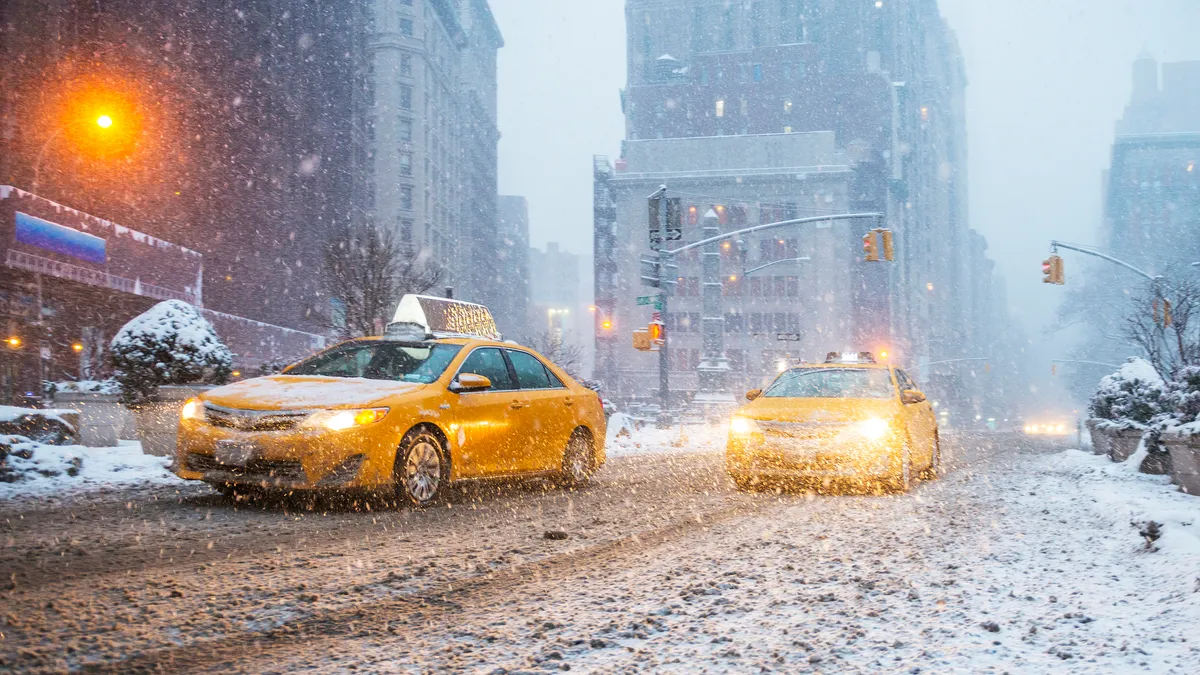Dive Brief:
-
Following urban emergencies, including terrorist attacks, subway shutdowns and car crashes, New York City ride-hailing services such as Uber saw passenger trips per hour decline significantly less than trips per hour in taxi services and other for-hire vehicles, according to a study published April 4 by researchers at Carnegie Mellon University and Peking University.
-
The study suggests ride-hailing apps outperformed taxis, in part, because they match drivers with passengers more efficiently than taxi services and provide built-in navigation, which can allow drivers to pick up and drop off passengers faster than taxis do.
-
Such apps also provide ride-hailing drivers with real-time information about ride requests, enabling them to respond quickly to changes in demand. Taxi drivers “tend to follow similar daily routines and are not able to access real-time demand information,” the study says.
Dive Insight:
This is one of the first studies to evaluate how ride-hailing services perform during emergencies, according to its authors.
Earlier studies showed that taxis are difficult to hail in lousy weather conditions and that ride-hailing drivers work more hours when they can earn higher wages, such as during surge-pricing events. Both findings suggested that ride-hailing services might respond more to increased ride demand than taxis do during unforeseen emergencies.
To find out, the researchers collected taxi and for-hire-vehicle trip records in New York City from January 2015 to December 2017 and compared them to trip records from ride-hailing apps to see which groups completed more trips per hour following urban emergencies. “The ridesharing platforms, in general, showed a statistically significantly smaller utilization decline than the taxi platforms,” the study says.
For instance, after a driver of a rented truck struck and killed eight people on a New York City bike path on Oct. 31, 2017, taxis saw a decrease in hourly trips that was over 18% larger than the decline among Uber drivers during the two days after the event, the study found, with similar results for Lyft. Likewise, in the wake of an unexpected subway shutdown, taxi use remained constant while Uber use increased significantly. Emergencies had less effect on higher-density locations than on low-density places, the study found.
The study offers several insights for city planners, ride service providers and passengers:
- City planners could encourage taxi and ride-hailing services to share information and technology during emergencies. In addition, taxi services could redesign their subsidies to incentivize drivers to work more hours or relocate during emergencies.
- Local officials could create emergency pick-up areas to allow drivers to access the emergency location “while avoiding potential traffic jams or road closures.” Likewise, taxi services could adopt new technologies or other approaches to better match the supply of drivers with rider demand.
- Passengers with urgent needs might want to consider a ride-hailing service before a taxi, thanks to better technology and a more stable supply of drivers and vehicles.
Co-author Sean Qian, a civil and environmental engineering professor who directs the Mobility Data Analytics Center at Carnegie Mellon University, said in a statement that “In light of our findings, service providers and city planners should reevaluate and improve their mobility platform, particularly under emergencies, disasters and hazards.”












